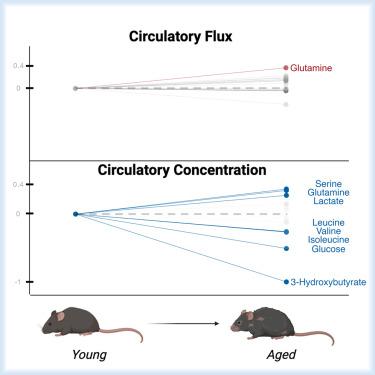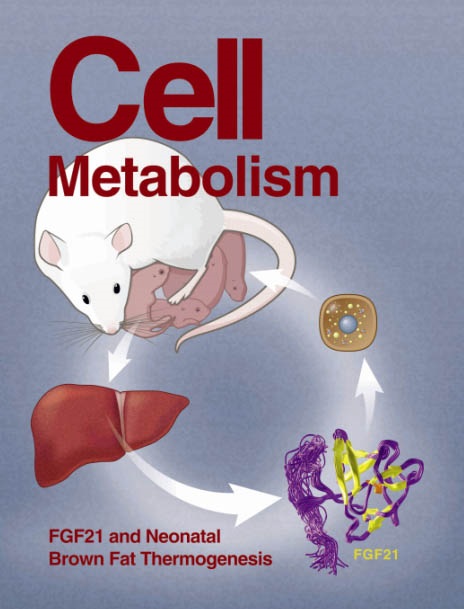老年小鼠表现出广泛的代谢变化,但保留了主要的通量
IF 30.9
1区 生物学
Q1 CELL BIOLOGY
引用次数: 0
摘要
代谢失调是衰老的标志。在这里,我们使用代谢组学和稳定同位素示踪来研究小鼠年龄诱导的代谢改变。测量了年轻和年老(20-30个月)C57BL/6J小鼠的循环代谢物通量、血清和组织浓度,并以年轻肥胖(ob/ob)小鼠为对照。对于主要循环代谢物,浓度随年龄的变化大于通量的变化,通量随肥胖的变化大于随衰老的变化。具体来说,葡萄糖、乳酸、3-羟基丁酸和许多氨基酸(但不包括牛磺酸)的浓度随着年龄的增长而显著变化。只有谷氨酰胺循环通量这样做。尽管潜在的代谢变化,主要循环代谢物的通量保持稳定。例如,赖氨酸的分解代谢从糖精途径转向细果酸途径,而细果酸的浓度和通量都随着年龄的增长而增加。其他较少的代谢物也表现出一致的、年龄引起的浓度和通量变化。因此,虽然衰老导致了广泛的代谢变化,但主要的代谢通量在很大程度上保留了下来。本文章由计算机程序翻译,如有差异,请以英文原文为准。

Aged mice exhibit widespread metabolic changes but preserved major fluxes
Metabolic dysregulation is a hallmark of aging. Here, we investigate in mice age-induced metabolic alterations using metabolomics and stable isotope tracing. Circulating metabolite fluxes and serum and tissue concentrations were measured in young and old (20–30 months) C57BL/6J mice, with young obese (ob/ob) mice as a comparator. For major circulating metabolites, concentrations changed more with age than fluxes, and fluxes changed more with obesity than with aging. Specifically, glucose, lactate, 3-hydroxybutryate, and many amino acids (but notably not taurine) change significantly in concentration with age. Only glutamine circulatory flux does so. The fluxes of major circulating metabolites remain stable despite underlying metabolic changes. For example, lysine catabolism shifts from the saccharopine toward the pipecolic acid pathway, and both pipecolic acid concentration and flux increase with aging. Other less-abundant metabolites also show coherent, age-induced concentration and flux changes. Thus, while aging leads to widespread metabolic changes, major metabolic fluxes are largely preserved.
求助全文
通过发布文献求助,成功后即可免费获取论文全文。
去求助
来源期刊

Cell metabolism
生物-内分泌学与代谢
CiteScore
48.60
自引率
1.40%
发文量
173
审稿时长
2.5 months
期刊介绍:
Cell Metabolism is a top research journal established in 2005 that focuses on publishing original and impactful papers in the field of metabolic research.It covers a wide range of topics including diabetes, obesity, cardiovascular biology, aging and stress responses, circadian biology, and many others.
Cell Metabolism aims to contribute to the advancement of metabolic research by providing a platform for the publication and dissemination of high-quality research and thought-provoking articles.
 求助内容:
求助内容: 应助结果提醒方式:
应助结果提醒方式:


